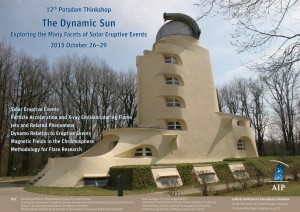Solar Eruptions: the CME-Flare Relationship
Bojan Vrsnak (Hvar Observatory)
Abstract.Coronal mass ejections (CMEs), caused by large-scale eruptions of the coronal magnetic field, often are accompanied by a more localized energy release in the form of flares, as a result of dissipative magnetic-field reconfiguration. Morphology and evolution of such flares, also denoted as dynamical flares are often explained as a consequence of reconnection of the arcade magnetic field, taking place below the erupting magnetic flux rope. A close relationship of the CME acceleration and the flare energy release is evidenced by various statistical correlations between parameters describing CMEs and flares, as well as by the synchronization of the CME acceleration phase with the impulsive phase of the associated flare. Such behaviour implies that there must be a feedback relation between the dynamics of the CME and the flare-associated reconnection process. From the theoretical standpoint, magnetic reconnection affects the CME dynamics in several ways. First, it reduces the tension of the overlying arcade magnetic field and increases the magnetic pressure below the flux rope, and in this way enhances the CME acceleration. Furthermore, it supplies the poloidal magnetic flux to the flux rope, which helps sustaining the electric current in the rope and prolonging the action of the driving Lorentz force to large distances. The role of these processes, directly relating solar flares and CMEs, is illustrated by employing a simple model, where the erupting structure is represented by a curved flux rope anchored at both sides in the dense/inert photosphere.
Invited Review
